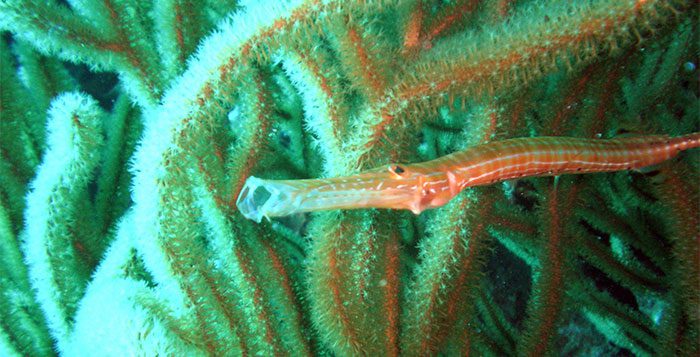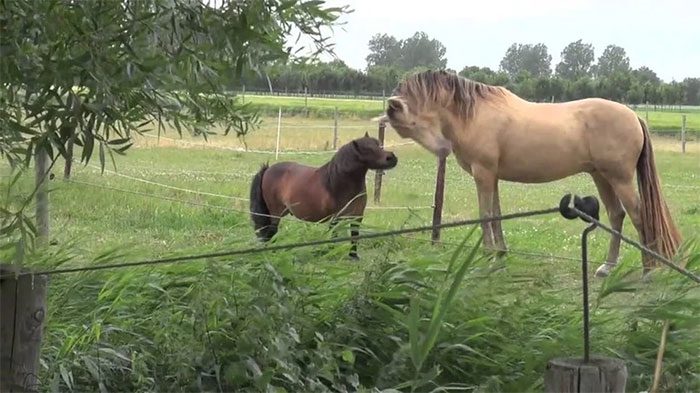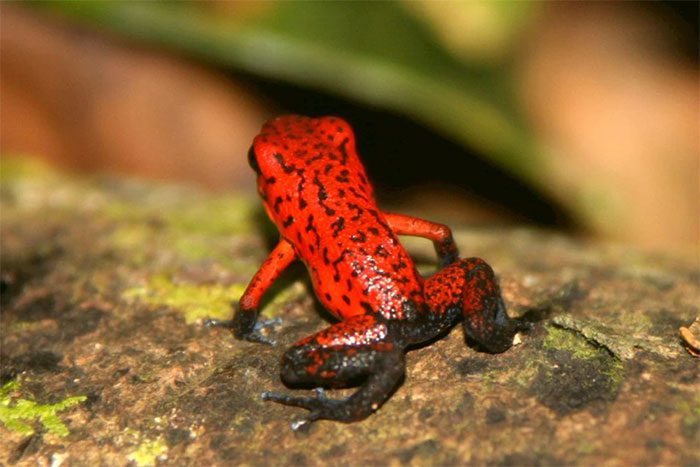Some male animals, such as North American grizzly bears and lions, exhibit infanticidal behavior, but compared to them, the three species discussed below display even more bizarre tendencies.
These creatures appear to have emotions and reasoning similar to humans, using their own feelings to make decisions regarding their offspring rather than simply acting on instinct.
Love for the Mother Comes Before the Care for the Offspring
Seahorses are closely related to pipefish. They range in length from 10 to 13 cm and primarily inhabit tropical and subtropical marine regions. Like seahorses, male pipefish also become pregnant and give birth. However, their treatment of their young is entirely dependent on the size and courtship skills of the female pipefish.

The more the male prefers the female, the more he cares for the eggs; otherwise, it’s the opposite.
Observations show that male pipefish choose their mates based on size, preferring females larger than themselves. The more they favor a female, the more they tend to care for the eggs, striving to ensure their healthy hatching and actively nurturing the young. Conversely, if they do not favor the female, the male quietly discards the embryos. Not only that, but he also absorbs the discarded embryos, converting them into nutrients to fatten himself.
“We still cannot explain why male pipefish become pregnant and give birth based on their feelings for the female. It seems that males of this species are highly emotional. They question whether the offspring of this female are worthy of being nurtured and answer that question through their personal emotions, a sort of ‘love the one you’re with, hate their entire family’ mentality,” speculates researcher Adam Jones from the Department of Biology at Texas A&M University.
“Better Safe Than Sorry”
Horses are a common mammal that humans domesticated very early, around 4500 BC. In this species, females take on all roles related to pregnancy, childbirth, and the care of young until they reach adulthood.
Males do not necessarily have to care for the foals, yet they can still display qualities of a good father. They invest considerable time and effort in caring for and protecting the foals. However, this only occurs when the male is certain that the foal is his.
Females are not known for their fidelity, so from the outset, males must work hard to keep an eye on their “wives” to prevent other males from getting close. Nevertheless, infidelity still occurs, and of course, there is a chance for the emergence of “illegitimate foals.”

If a male suspects that a foal is not his, he will ruthlessly kill it. (Image: Youtube.com).
The biggest concern for male horses is lineage. To ensure the transmission of their genes, they are willing to dedicate themselves to foals, who will become future rivals for their partners. And, in the name of genetic inheritance, they brutally kill foals that do not share their bloodline in the cruelest way: violently slaughtering them right after birth.
Males cannot distinguish the bloodline of a foal, so they adopt the most extreme strategy: “better safe than sorry.” If they detect a female exhibiting “promiscuous” behavior, they will do everything to kill the newly born foal, regardless of whether that foal is another male’s or their own.
Urinating on Eggs
The strawberry poison dart frog is a toxic frog species that inhabits tropical rainforests in Central and South America and on some islands in Hawaii. These frogs belong to a larger species group and are known for their potent toxicity, which indigenous people once used to coat their arrows for hunting.
Compared to other frog species, strawberry poison dart frogs lay very few eggs, only about 3 to 6 at a time. The female lays eggs on thick foliage close to the ground, and the male is responsible for protecting the eggs. For about 10 to 18 days before hatching, the male diligently… urinates on the eggs to keep them moist and scent them.

The male strawberry poison dart frog cares for the eggs by urinating on them to maintain moisture. (Image: Blog.frontiersin.org)
According to researchers, urinating on the eggs is a way for male poison dart frogs to help females conceal the eggs’ location from predators. Protecting and caring for the eggs is the male’s full-time job until they hatch.
Day and night, the male’s focus is entirely on the eggs. They continuously check the moisture levels, replenishing water by urinating on them and keeping watch for any threats.
Once the eggs hatch, the responsibility of caring for the young reverts to the female strawberry poison dart frog. She carries each tadpole on her back, climbs to water-filled tree hollows, usually in high wild pineapple crevices, and deposits them inside, with only one tadpole per crevice.
After about 43 to 52 days, the tadpoles transform into young frogs, crawl out of the water-filled crevices, and hop away to forage on land. In about 10 months, they will grow into mature male and female strawberry poison dart frogs, continuing the lineage.


















































